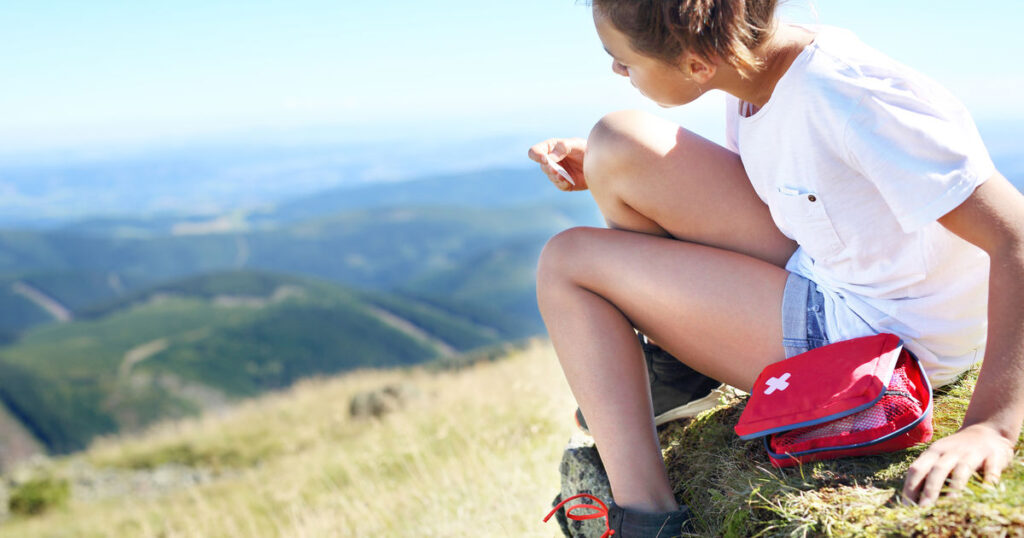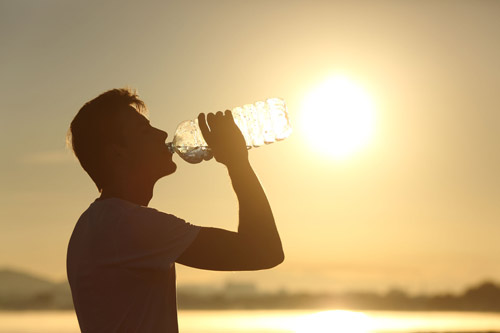First Aid Tips for Common Summer Injuries

Child sticking plaster on knee.
-
Table of Contents
“Stay safe under the sun with essential First Aid Tips for Common Summer Injuries.”
Introduction:
Summer is a time for outdoor activities and fun in the sun. However, it also brings with it an increased risk of certain injuries. Whether you’re enjoying a day at the beach, going for a hike, or simply spending time in your backyard, it’s important to be prepared for common summer injuries. In this article, we will provide you with some essential first aid tips to help you handle these injuries effectively and ensure a safe and enjoyable summer season.
Sunburn: How to Treat and Prevent Sunburns
Summer is a time for fun in the sun, but it’s also a time when common injuries can occur. One of the most common summer injuries is sunburn. Sunburns can be painful and uncomfortable, but with the right treatment and prevention, you can minimize the damage and enjoy the rest of your summer.
Treating a sunburn is all about relieving the pain and promoting healing. The first step is to get out of the sun and into a cool, shaded area. Applying a cold compress or taking a cool shower can help to soothe the burn. It’s important to avoid using ice or very cold water, as this can further damage the skin.
After cooling the burn, it’s important to moisturize the skin. Aloe vera gel is a popular choice for sunburn relief, as it has a cooling effect and helps to hydrate the skin. Applying a thin layer of aloe vera gel to the affected area can provide immediate relief. It’s also important to drink plenty of water to stay hydrated and help the body heal.
In addition to treating a sunburn, it’s important to take steps to prevent future sunburns. The most effective way to prevent sunburn is to limit your exposure to the sun, especially during peak hours when the sun’s rays are the strongest. Seeking shade, wearing protective clothing, and using sunscreen are all important steps in preventing sunburn.
When choosing a sunscreen, it’s important to look for one that offers broad-spectrum protection and has a high SPF. Broad-spectrum protection means that the sunscreen protects against both UVA and UVB rays, which are the two types of ultraviolet radiation that can damage the skin. SPF, or sun protection factor, measures how well a sunscreen protects against UVB rays. Experts recommend using a sunscreen with an SPF of at least 30.
Applying sunscreen correctly is also important for effective protection. It’s recommended to apply sunscreen at least 15 minutes before going outside to allow it to fully absorb into the skin. Be sure to apply sunscreen to all exposed areas of the body, including the face, ears, neck, and hands. Reapply sunscreen every two hours, or more frequently if you are swimming or sweating.
In addition to sunscreen, wearing protective clothing can provide an extra layer of defense against the sun’s harmful rays. Lightweight, long-sleeved shirts, wide-brimmed hats, and sunglasses with UV protection can all help to shield your skin from the sun. Seeking shade during the hottest part of the day, typically between 10 a.m. and 4 p.m., can also help to reduce your risk of sunburn.
By following these tips for treating and preventing sunburns, you can enjoy the summer sun without suffering the painful consequences. Remember to always take care of your skin and prioritize your health. With a little bit of preparation and caution, you can have a safe and enjoyable summer season.
Insect Bites and Stings: First Aid Tips for Dealing with Common Summer Pests
Summer is a time for outdoor activities and enjoying the warm weather. However, it also brings with it an increased risk of insect bites and stings. Whether you’re hiking in the woods, picnicking in the park, or simply relaxing in your backyard, it’s important to be prepared for these common summer pests. In this article, we will provide you with some first aid tips for dealing with insect bites and stings.
One of the most common summer pests is the mosquito. These tiny insects can leave itchy, red bumps on your skin. To alleviate the discomfort, it’s important to resist the urge to scratch the affected area. Scratching can lead to further irritation and increase the risk of infection. Instead, apply a cold compress or ice pack to the bite to reduce swelling and relieve itching. You can also use over-the-counter anti-itch creams or lotions to provide temporary relief.
Another common summer pest is the bee or wasp. If you are stung by one of these insects, the first step is to remove the stinger if it is still embedded in your skin. Use a credit card or your fingernail to scrape it out, being careful not to squeeze the venom sac. Once the stinger is removed, wash the area with soap and water to prevent infection. Applying a cold compress or ice pack can help reduce pain and swelling. If you are experiencing severe symptoms such as difficulty breathing or swelling of the face and throat, seek immediate medical attention as you may be having an allergic reaction.
Ticks are another common summer pest that can transmit diseases such as Lyme disease. If you find a tick attached to your skin, it’s important to remove it as soon as possible. Use fine-tipped tweezers to grasp the tick as close to the skin’s surface as possible. Pull upward with steady, even pressure, being careful not to twist or jerk the tick. After removing the tick, clean the area with soap and water or an antiseptic. If you develop a rash or flu-like symptoms within a few weeks of being bitten, consult a healthcare professional as you may have contracted a tick-borne illness.
Fire ants are a common summer pest in some regions. Their bites can cause painful, itchy, and swollen bumps. To treat fire ant bites, wash the affected area with soap and water. Applying a cold compress or ice pack can help reduce pain and swelling. Over-the-counter hydrocortisone creams or antihistamines can also provide relief from itching. If you experience severe symptoms such as difficulty breathing or swelling of the face, seek medical attention immediately.
Prevention is key when it comes to dealing with insect bites and stings. Wearing long sleeves, pants, and socks can help protect your skin from bites. Applying insect repellent containing DEET or picaridin can also help deter mosquitoes and other biting insects. Avoiding areas with high insect activity, such as stagnant water or dense vegetation, can also reduce your risk of being bitten or stung.
In conclusion, being prepared and knowing how to deal with insect bites and stings is essential for enjoying a safe and comfortable summer. By following these first aid tips, you can alleviate discomfort and reduce the risk of complications. Remember to seek medical attention if you experience severe symptoms or if you suspect you may have contracted a tick-borne illness. Stay safe and enjoy your summer outdoors!
Heat Exhaustion and Heatstroke: Recognizing and Responding to Heat-related Injuries
Summer is a time for fun in the sun, but it’s also a time when heat-related injuries can occur. Heat exhaustion and heatstroke are two common injuries that can be serious if not recognized and treated promptly. In this article, we will discuss how to recognize the signs of heat exhaustion and heatstroke and provide tips on how to respond to these heat-related injuries.
Heat exhaustion is a condition that occurs when the body overheats due to prolonged exposure to high temperatures and inadequate fluid intake. It is often characterized by heavy sweating, weakness, dizziness, and nausea. If left untreated, heat exhaustion can progress to heatstroke, a life-threatening condition.
Recognizing the signs of heat exhaustion is crucial in order to respond effectively. If you or someone you know is experiencing heavy sweating, weakness, dizziness, nausea, or muscle cramps, it’s important to take immediate action. Move to a cooler area, preferably indoors with air conditioning, and remove any excess clothing. Drink plenty of fluids, preferably water or a sports drink that contains electrolytes. Applying cool, wet cloths to the skin or taking a cool shower can also help lower body temperature.
If the symptoms of heat exhaustion worsen or if the person loses consciousness, it may be a sign of heatstroke. Heatstroke is a medical emergency that requires immediate attention. In addition to the symptoms of heat exhaustion, heatstroke may also cause confusion, seizures, rapid heartbeat, and hot, dry skin. Call emergency services right away and take steps to cool the person down while waiting for help to arrive.
To cool down someone with heatstroke, move them to a shaded area and remove any excess clothing. Apply cool water to their skin and fan them to promote evaporation and cooling. Placing ice packs or cold compresses on their neck, armpits, and groin can also help lower body temperature. It’s important to continue cooling efforts until medical professionals arrive.
Preventing heat-related injuries is always better than treating them. To avoid heat exhaustion and heatstroke, it’s important to stay hydrated by drinking plenty of fluids, especially water, throughout the day. Avoid excessive physical activity during the hottest parts of the day and take frequent breaks in shaded or air-conditioned areas. Wearing loose, lightweight, and light-colored clothing can also help keep the body cool.
It’s also important to be aware of the risk factors that can increase the likelihood of heat-related injuries. Certain medications, such as diuretics and antihistamines, can impair the body’s ability to regulate temperature. People with chronic medical conditions, such as heart disease or diabetes, are also at a higher risk. Additionally, infants, young children, and older adults are more susceptible to heat-related injuries.
In conclusion, recognizing and responding to heat-related injuries is crucial during the summer months. Heat exhaustion and heatstroke can be serious conditions if not treated promptly. By knowing the signs of heat exhaustion and heatstroke and taking appropriate action, such as moving to a cooler area, staying hydrated, and seeking medical help when necessary, you can help prevent and respond effectively to these common summer injuries. Stay safe and enjoy the summer sun responsibly!In conclusion, having knowledge of first aid tips for common summer injuries is crucial in ensuring prompt and appropriate care. By being prepared and knowing how to respond to injuries such as sunburns, heat exhaustion, insect bites, and water-related accidents, individuals can effectively manage these situations and potentially prevent further complications. It is important to remember that while first aid can provide immediate relief, seeking professional medical attention is always recommended for more severe injuries.

 Tips for Staying Hydrated in Hot Weather
Tips for Staying Hydrated in Hot Weather  The Benefits of Swimming for Overall Health
The Benefits of Swimming for Overall Health  Effective Home Remedies for Sunburn Relief
Effective Home Remedies for Sunburn Relief  Summer Allergies: Symptoms and Treatments
Summer Allergies: Symptoms and Treatments  Exploring London’s Best Butcher Shops
Exploring London’s Best Butcher Shops  Enhance Your Shop Appeal with Sydney’s Best Carpentry Services
Enhance Your Shop Appeal with Sydney’s Best Carpentry Services  A Detailed Look at the Features of the LEGO Technic Mars Crew Exploration Rover
A Detailed Look at the Features of the LEGO Technic Mars Crew Exploration Rover